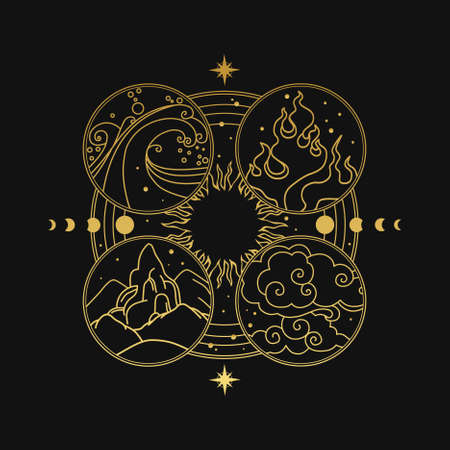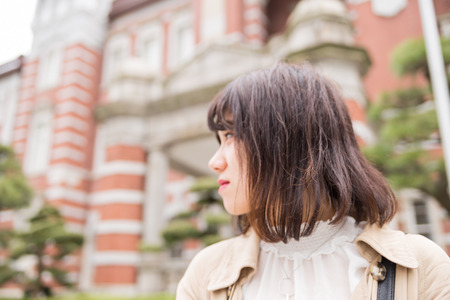Introduction: The British Fascination with the Stars
There’s something quietly enchanting about strolling down a British high street, where echoes of history mingle with the hum of modern life. Amongst the bookshops, bakeries, and bustling markets, astrology has carved out its own unique niche—a gentle reminder of Britain’s age-old intrigue with the mystical. From Victorian parlours perfumed with intrigue to today’s vibrant psychic fairs, astrology has long found a home here, woven into the fabric of daily life. This enduring charm is more than just a passing trend; it speaks to a collective curiosity for what lies beyond the ordinary. For centuries, Britons have looked skyward—not just for weather forecasts but for cosmic clues about fate and fortune. It’s a love affair shaped by tradition and tinged with wonder, inviting everyone to pause for a moment and consider the stars above, as well as the stories they inspire on every corner of the high street.
Victorian Parlours: Astrology’s Heyday in the Drawing Room
Step into a Victorian parlour, and you’ll find yourself embraced by the gentle glow of candlelight, the aroma of steeped Earl Grey wafting through the air, and the soft murmur of friends gathered for an evening of diversion. In this era, astrology truly blossomed on British high streets—not just as a mystical pursuit, but as a cherished social pastime woven into the fabric of everyday life. The drawing room became both sanctuary and stage, where fortunes were revealed and destinies pondered with a delightful mixture of curiosity and reverence.
The Victorians, ever resourceful in their quest for amusement, transformed astrology into an art form that soothed anxieties and sparked intrigue. Parlour games revolving around birth charts and zodiac signs offered more than simple entertainment; they provided comfort in uncertain times. As steam trains thundered across the countryside and the world seemed to be changing faster than ever before, these gatherings allowed participants to find meaning—and perhaps a sense of control—through the stars.
The Social Rituals of Astrological Evenings
Astrology was not merely whispered among fortune-tellers in shadowy corners—it was celebrated openly in polite society. Tea parties would often culminate with guests sharing their star signs, exchanging witty banter about Mercury’s moodiness or Venus’s charms. Astrological readings became a staple at soirées, where everyone from debutantes to dowagers might have their horoscopes read aloud to delighted laughter and knowing glances.
Common Victorian Parlour Astrology Activities
| Activity | Description | Cultural Significance |
|---|---|---|
| Birth Chart Readings | Guests’ birth details mapped out for personalised insights | Brought intimacy and connection among friends |
| Parlour Fortune-Telling Games | Zodiac-based card games predicting love or luck | Blended fun with a dash of mystique |
| Astrological Debates | Light-hearted discussions on star sign compatibilities | Encouraged social interaction and intellectual playfulness |
| Mystical Storytelling Evenings | Tales spun around famous horoscopes or celestial events | Wove astrology into local folklore and imagination |
Why Astrology Resonated with Victorians
The fascination with astrology during this period wasn’t simply escapism. It was also rooted in the Victorian desire to blend science with spirituality, rationality with romance. As new discoveries reshaped society, astrology offered continuity—a comforting thread connecting individuals to both ancient wisdom and each other. Within those smoky rooms and gilded parlours, it served as a gentle guide through life’s uncertainties, its insights as warmly received as a freshly poured cup of tea.

3. Twentieth-Century Street Corners: Horoscopes Hit the Newsstands
If you strolled down a British high street during the bustling decades of the twentieth century, you’d find astrology stepping gracefully out from behind heavy velvet curtains and into the everyday lives of ordinary people. No longer reserved for exclusive parlours or whispered conversations in drawing rooms, star signs and planetary predictions began to sparkle on newsstands and kiosks across the nation. The post-war years saw an undeniable shift: astrology was being democratised, becoming as much a part of daily life as a cup of tea or a stroll through the local park.
The birth of the modern horoscope column can be traced back to the 1930s, when The Sunday Express published one of Britain’s first regular astrological features. Suddenly, millions could start their day with a glimpse at what the stars had in store—whether it was romance for Libra or an unexpected windfall for Taurus. These columns, penned in gentle, encouraging tones, offered both guidance and comfort amidst turbulent times. For many, they became a cherished ritual—a brief moment of reflection before facing the unpredictable British weather or the rush of city life.
It wasn’t just newspapers that embraced this celestial trend. Astrology booklets and pamphlets—often adorned with whimsical illustrations—appeared in local bookshops, market stalls, and even tucked between railway magazines at bustling stations. Accessible and affordable, these guides invited everyone to discover their sun sign’s secrets without needing to consult a private astrologer. Local shops became gateways to self-discovery, where neighbours might exchange knowing smiles over shared Scorpio traits or debate whether Mercury retrograde truly explained last week’s muddle at work.
This period marked a beautiful levelling of astrological knowledge. Star wisdom was no longer the preserve of mystics or aristocrats; instead, it belonged to every commuter, shopkeeper, and schoolteacher who paused to read their sign’s fortunes on the way to work. The British high street buzzed with cosmic conversation, weaving astrology into the very fabric of modern community life.
4. British Attitudes: Scepticism Meets Curiosity
There is something quintessentially British about the way astrology has been received on the high street—from the clipped tones of Victorian parlour hosts to today’s bustling psychic fairs. The United Kingdom has long been a land where dry wit and raised eyebrows go hand in hand with a genuine, if quietly concealed, curiosity about the stars. This delicate dance between scepticism and wonder is woven into the fabric of British society, shaping how astrology is both discussed and experienced.
The Art of Polite Doubt
In Britain, expressing outright enthusiasm for astrology might elicit a knowing smirk or a softly uttered “Really?” Yet, beneath this layer of polite doubt lies a subtle fascination. Britons are masters at balancing humour with humility—a gentle ribbing about your star sign often hides an unspoken hope that perhaps, just perhaps, the universe does have something meaningful to say. Consider how conversations might unfold over tea:
| Typical British Response | Underlying Sentiment |
|---|---|
| “Oh, you’re a Leo? That explains everything!” | Playful banter masking interest |
| “I don’t believe in horoscopes—except when they’re right.” | Sceptical curiosity |
| “Astrology? It’s all a bit of fun, isn’t it?” | Cautious openness |
A Quiet Longing for Insight
Despite their reputation for cynicism, many Britons harbour a quiet longing for insight and connection—something astrology has always promised. During uncertain times, whether on foggy London mornings or amidst modern-day uncertainties, astrology offers not only guidance but also comfort. There is an unspoken understanding that looking to the stars may be whimsical, but it is also deeply human.
The Blend of Wit and Wonder
This unique blend of gentle humour and wistful yearning creates a space where astrology can thrive on the British high street. Here, one might find tarot readers tucked between charity shops and bakers, or horoscope columns nestled between cricket scores and weather forecasts. Astrology becomes less about dogma and more about storytelling—a way for Britons to explore themselves with both a twinkle in their eye and warmth in their hearts.
The Enduring Appeal
Ultimately, it is this marriage of scepticism and curiosity that keeps astrology alive in British culture. From Victorian parlours filled with laughter and intrigue to today’s psychic fairs buzzing with hopeful seekers, the journey through astrology is as much about the questions as the answers. And in true British fashion, the search continues—with wit as sharp as ever and hearts forever open to a little cosmic magic.
5. Modern High Streets: Psychic Fairs and Boutique Studios
Step onto today’s British high street, and you’ll find the spiritual landscape as vibrant as ever—albeit with a fresh, contemporary twist. Where once Victorian parlours whispered secrets behind velvet curtains, now psychic fairs and boutique astrology studios light up community centres and independent shopfronts. Crystal healers, tarot readers, and astrologers share space alongside vegan cafés and wellness boutiques, inviting passers-by to pause for a birth chart reading or a moon ritual workshop. There’s a warm sense of inclusivity; these spaces often honour the street’s heritage through vintage décor or nods to local folklore while weaving in mindfulness practices and sustainable products. This modern resurgence isn’t just about personal insight; it’s deeply tied to the British yearning for genuine connection amidst bustling city life. Here, astrology is both anchor and compass—a gentle guide for those seeking meaning, belonging, or simply a moment of cosmic calm amid the familiar hum of the high street.
6. Conclusion: The Enduring Allure of the Cosmos in British Culture
From the mist-shrouded drawing rooms of Victorian London, where astrology was whispered about behind gloved hands and velvet curtains, to today’s bustling psychic fairs on the British High Street, the fascination with the stars has woven itself quietly but unmistakably into the fabric of British culture. There is something uniquely comforting in knowing that, whether you are sipping tea in a quaint market town or strolling through the vibrant lanes of Manchester or Brighton, the gentle guidance of the cosmos is never far away.
Astrology’s journey in Britain is a testament to its adaptability and enduring charm. Once reserved for the privileged few who could afford private readings by candlelight, astrological wisdom now dances amidst tarot cards and crystal stalls at local fairs, and even slips into everyday conversations at pubs and book clubs. Its language has shifted—no longer solely the domain of mysterious mystics, but spoken by modern Britons seeking meaning, hope, or simply a playful connection to something greater.
This evolving presence reflects a broader truth about British life: a willingness to embrace both tradition and reinvention. Astrology has become not just a curiosity but a gentle companion for many—a trusted guide through life’s uncertainties, offering reassurance during uncertain times and celebrating moments of joy and self-discovery.
In every era, from gas-lit parlours to neon-lit arcades, the allure of the cosmos has invited people to reflect on their lives with kindness and insight. It reminds us that we are all part of something vast yet intimately connected—a constellation of dreams, hopes, and quiet longings scattered across this green and pleasant land.
So as we raise our eyes skyward on clear British nights or pause for a reading at a bustling fair, we honour not just an ancient practice but a living tradition—one that continues to evolve while nurturing our need for meaning and belonging. The stars above may be distant, but their stories still shimmer softly on every corner of the British High Street.


